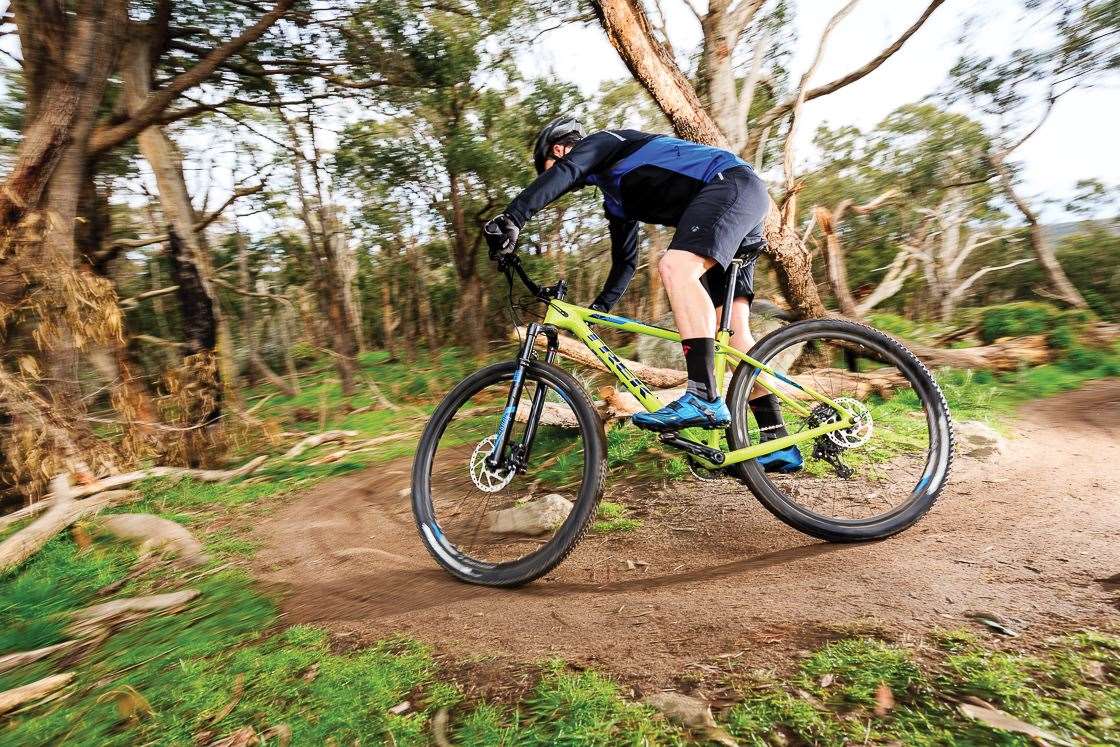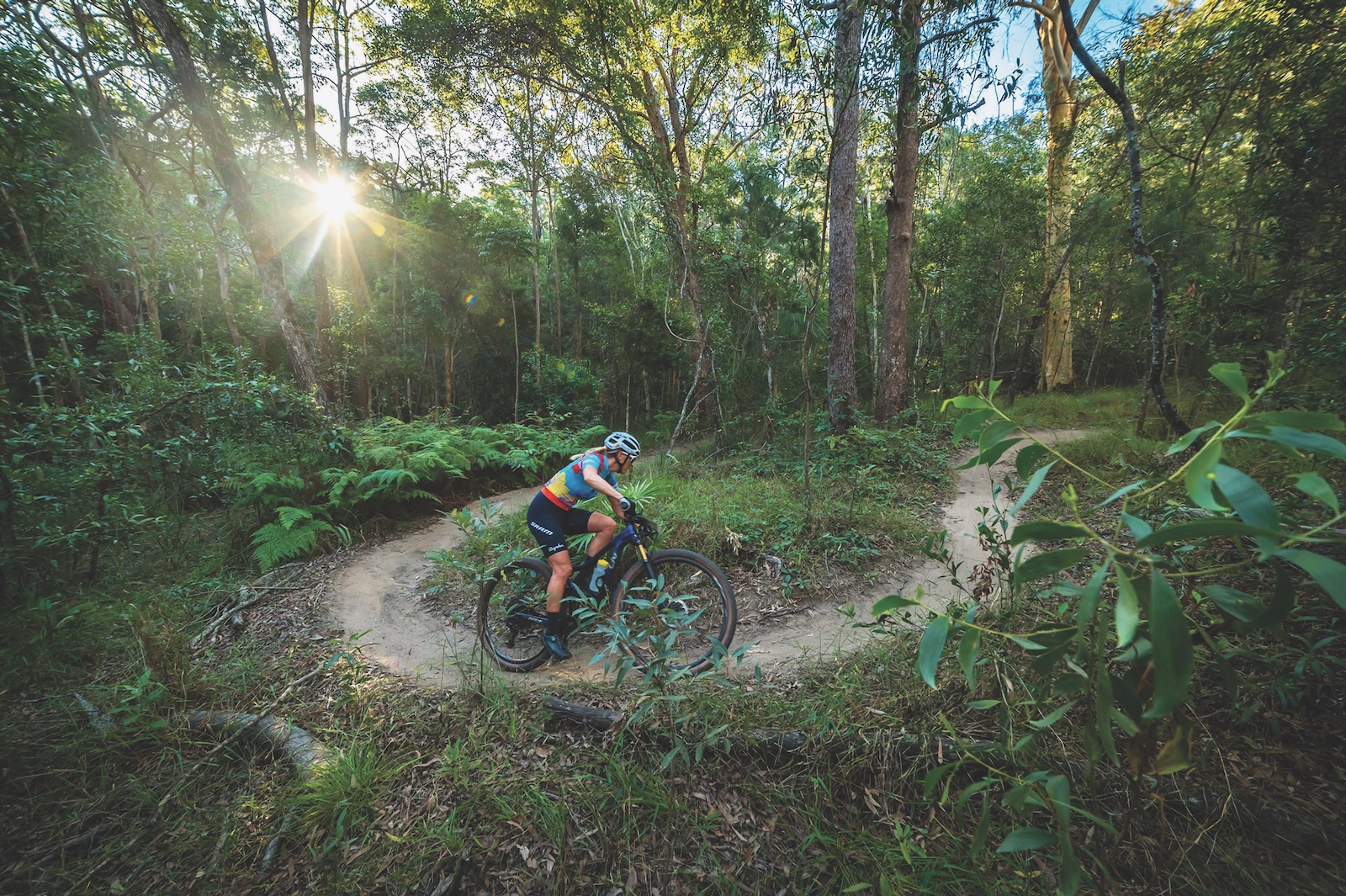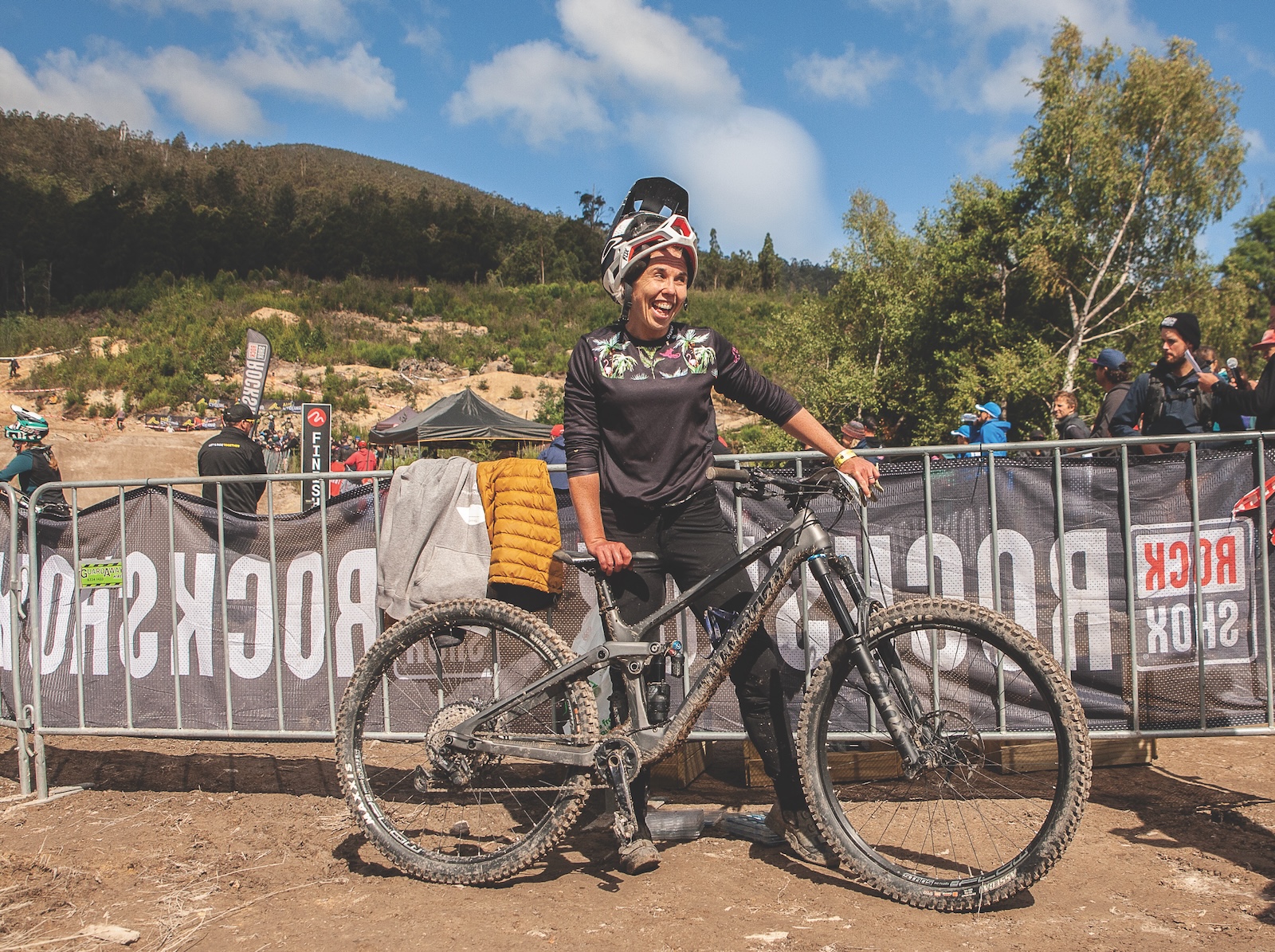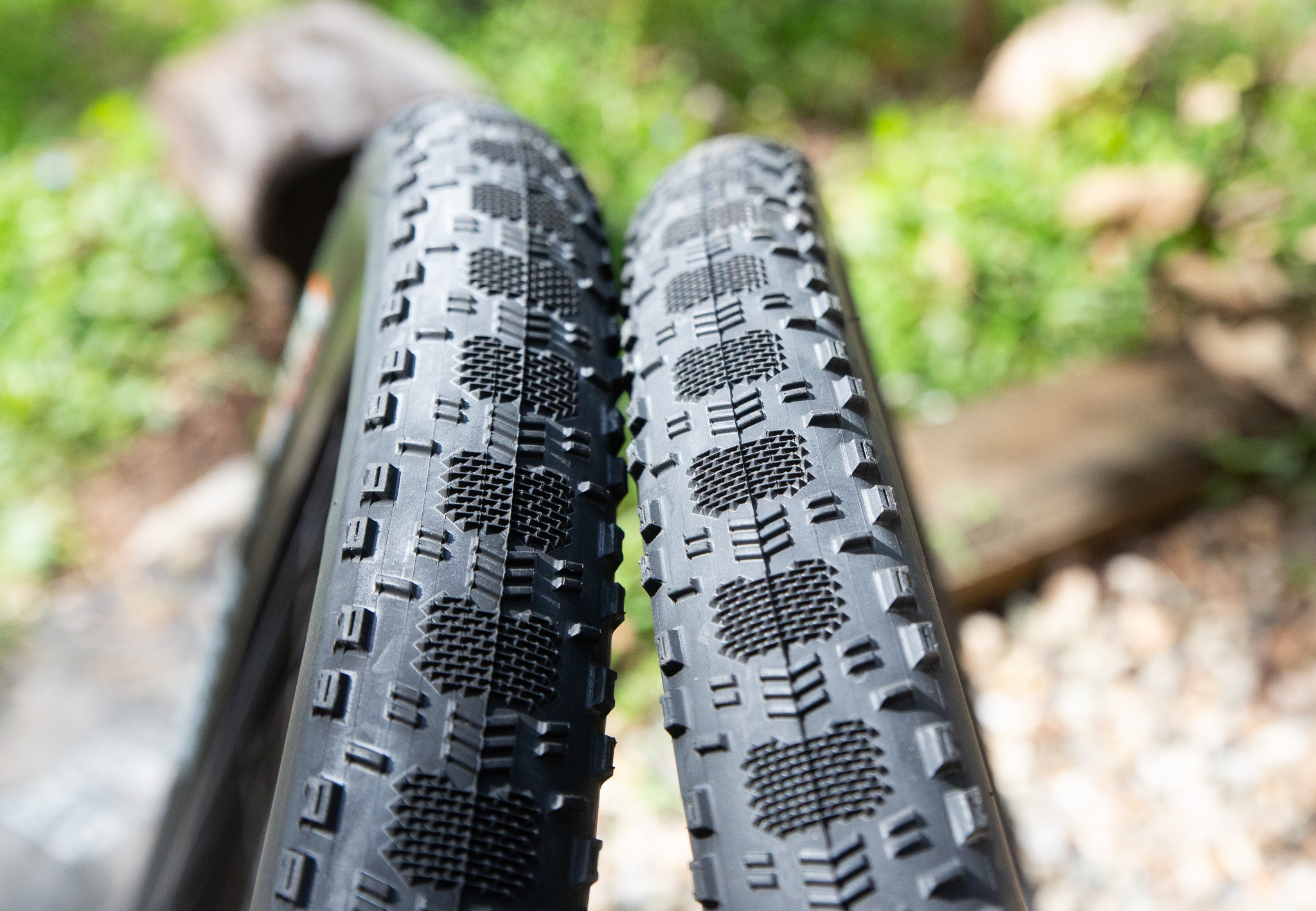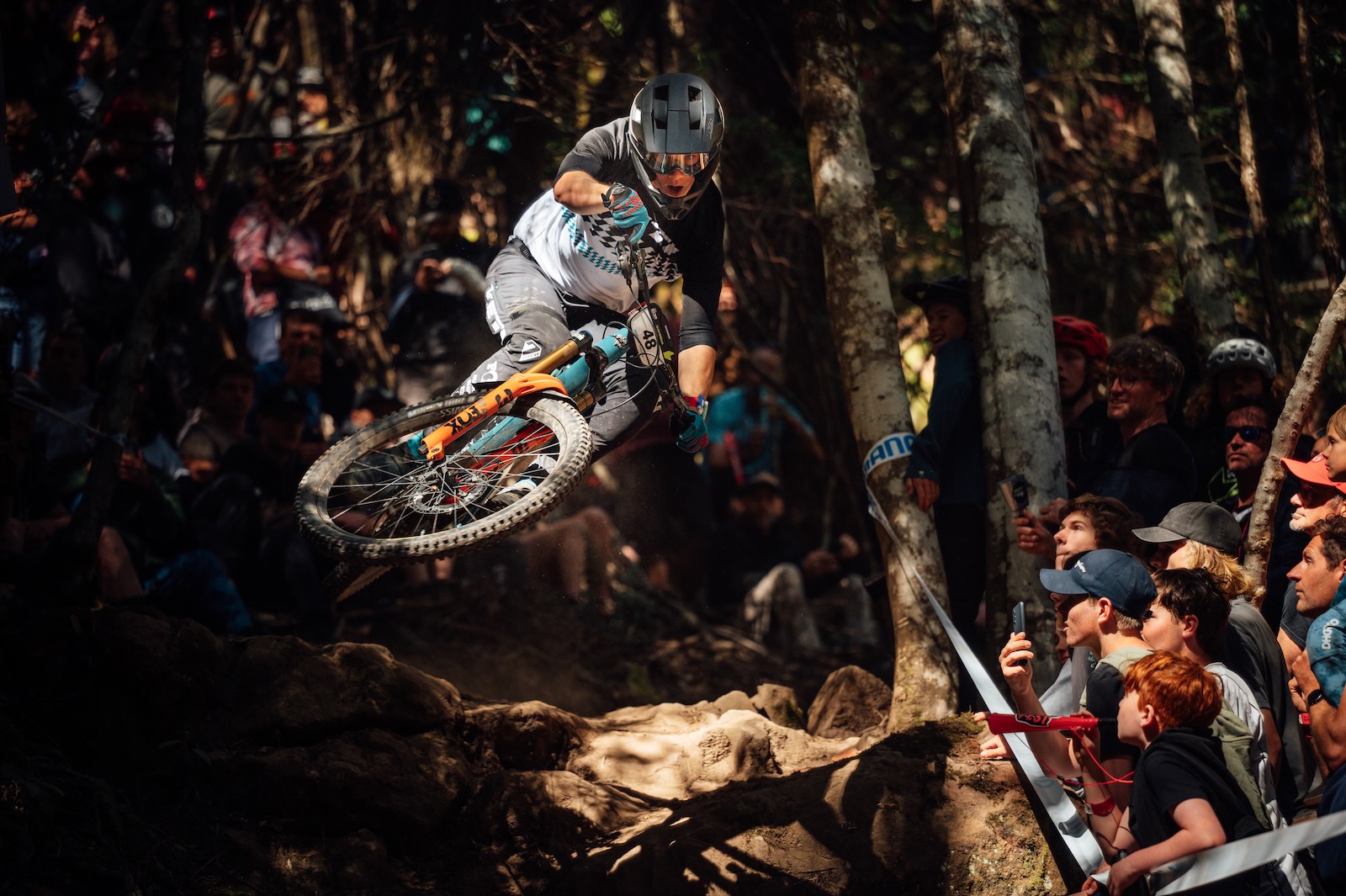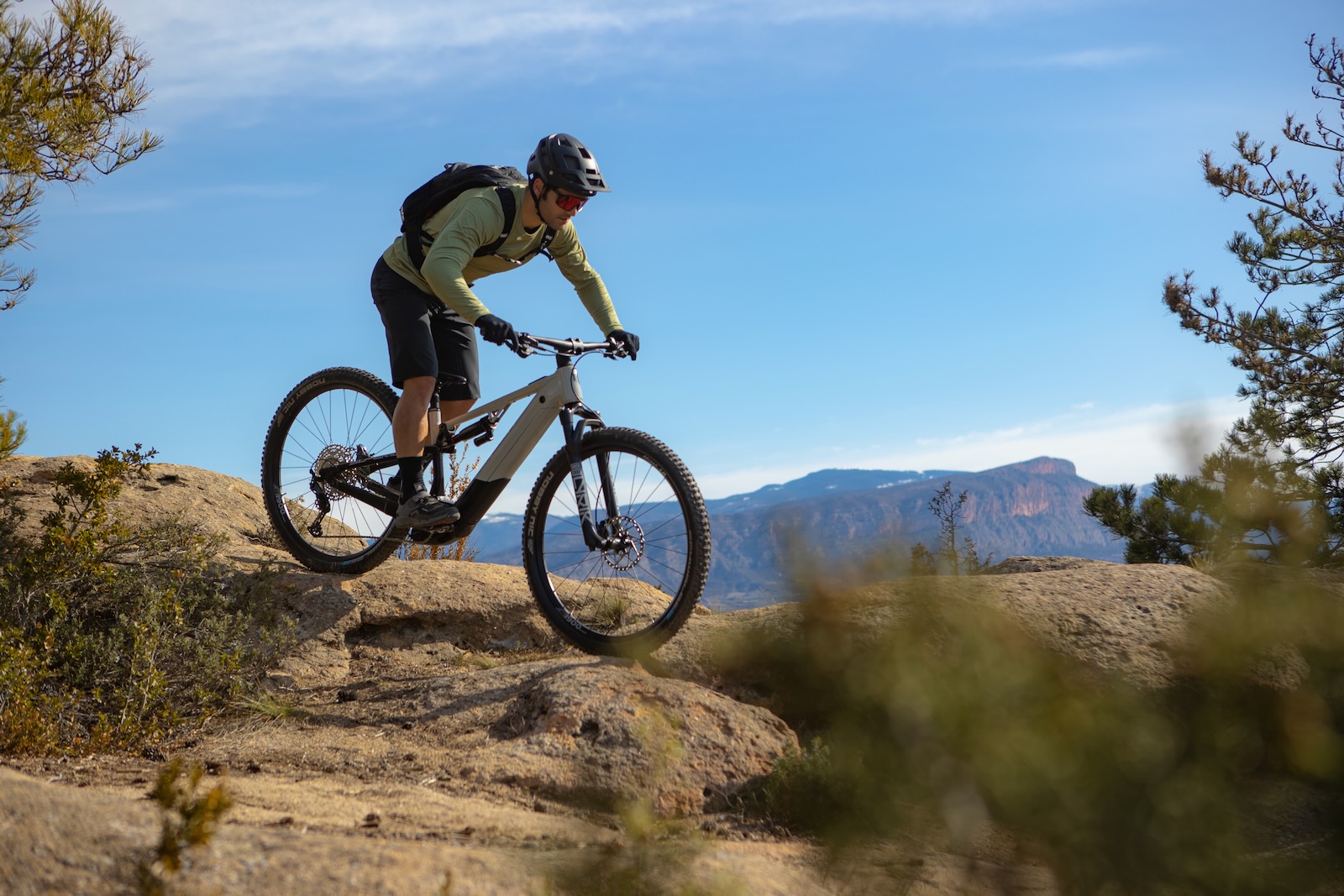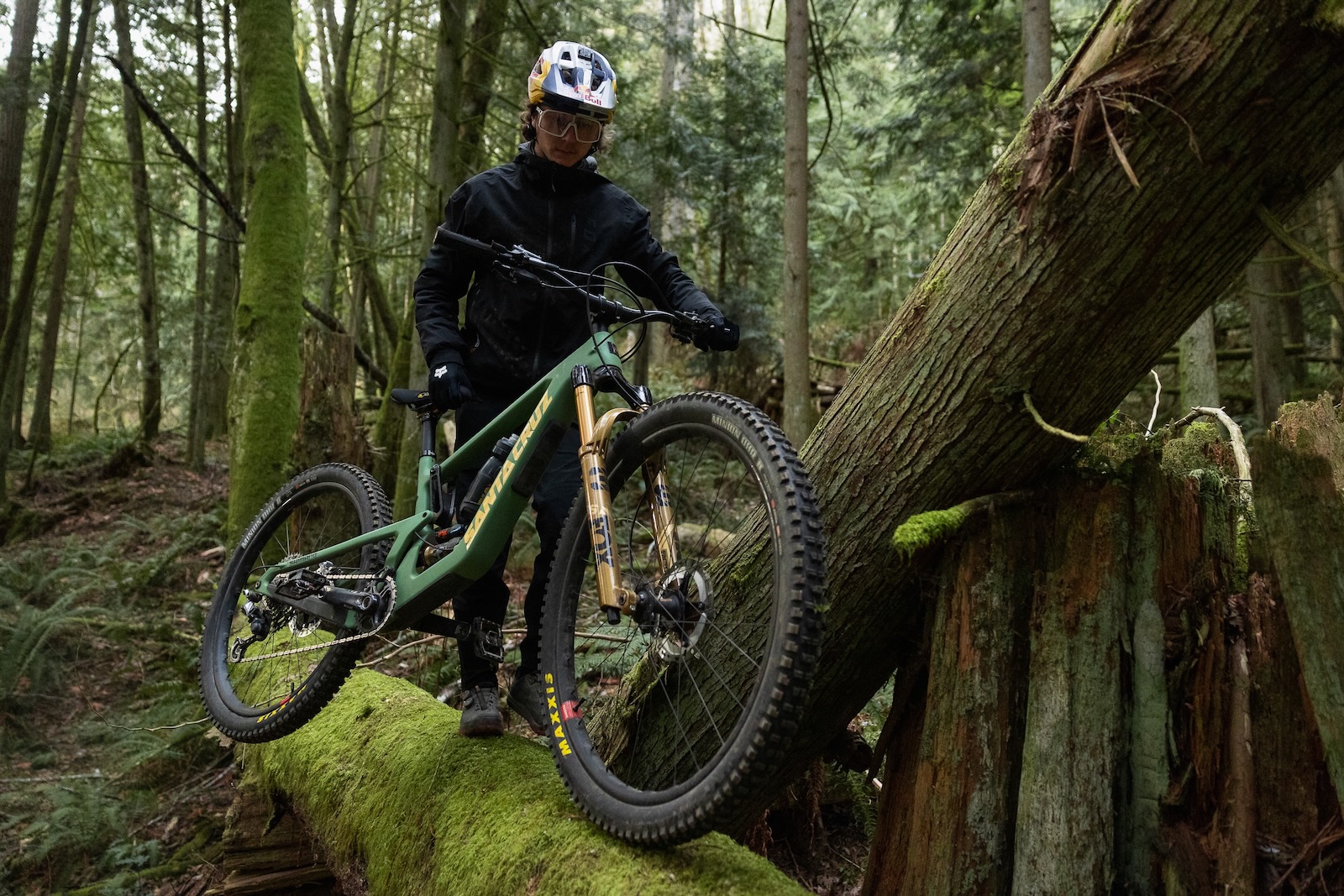TESTED: Trek Procaliber 9.7SL
In the highly competitive world of XCO racing, the hardtail is still king.
In the highly competitive world of XCO racing, the hardtail is still king. Dual suspension bikes may dominate at your local trail head, but when it comes to sidling up at the start line of a World Cup round, most pros are still favouring the lighter and snappier hardtail option as their tool of choice.
Over the past decade, we’ve seen significant advancements in suspension and frame technology. Full suspension bikes are evolving into faster, lighter and more efficient machines. They’re more durable than ever, and they’re also getting better value too, making them the primary choice for your average weekend warrior. Over that same period however, hardtails have been evolving too.
Aiming to massage all of these frame, component, and geometry innovations together into the one flagship race bike, Trek recently released the brand new Procaliber.
The Procaliber replaces the outgoing Superfly. This is kind of a big deal, as the Superfly is a bike that we already hold in high regard at AMB, and it’s one that help start the whole carbon 29er movement back in 2007. Having been in production for nearly a decade, there’s a lot of history associated with that name.
“We wanted a new name to signify the revolution in hardtails that IsoSpeed was”, explains Travis Ott, Trek’s MTB Brand Manager, when I asked him about ditching the Superfly name. “We pulled back a legacy Gary Fisher name in the Procaliber. Procaliber was the pinnacle race bike back in the late 90s of XC racing. We wanted that same cachet.”
Hold on, Iso-what?
Take a closer look at the junction between the seat tube and the top tube – that’s a pivot, and that’s what Trek call IsoSpeed. Back in 2012, Trek unveiled the Domane endurance road bike that featured the same IsoSpeed pivot, or ‘decoupler’ as it’s also known. The concept behind the design is to maximise vertical compliance at the saddle, by allowing the seat post and seat tube to flex from that pivot. In essence, the pivot ‘decouples’ the seat tube from the rest of the frame. It’s an elegantly simple solution that has already been proven on the Domane, as well as the Boone cyclocross bike that Mike tested last issue.
As you can imagine, the design also makes perfect sense for a mountain bike. World Cup racers are constantly searching for more comfort from their hardtails, because a more comfortable bike means less fatigue on rough racecourses.
First thoughts on the Trek Procaliber
The bright neon pokemon you see here is the entry point into the Procaliber range. But despite being “the cheap one”, the Procaliber 9.7 SL is equipped with much of the same performance features as the more expensive models. There’s a remote handlebar lockout for the RockShox Reba RL fork, tubeless compatible Mustang Elite wheels, and a slick 1×11 GX drivetrain courtesy of SRAM. All must haves for the competitive XC racer these days.
More importantly though, the Procaliber 9.7 SL shares the same frame as its more expensive brethren, which is constructed from Trek’s patented OCLV Mountain carbon fibre. Many of the tube shapes are borrowed from the outgoing Superfly SL frame, though the addition of the IsoSpeed pivot sees the Procaliber creeping up to a claimed 1012 grams for a medium frame. Cable routing has tidied up considerably thanks to the new Control Freak management system, which offers a plethora of internal and external routing options. You can secure a Di2 battery inside the downtube, and the Procaliber’s 31.6mm seat tube will even take a dropper seatpost (Stealth or external).
Trek has moved away from their proprietary BB95 bottom bracket shell, instead using the PF92 standard that allows for greater compatibility with more cranks such as the RaceFace Next SL. We suspect the 92mm wide press-fit bottom bracket shell is a little cheaper to manufacture too.
Another change is the move to Boost hub spacing. First debuted on last years Remedy 29er, the Boost design employs a 148mm wide rear hub and a 110mm wide front hub, which helps to increase wheel stiffness by moving the flanges further apart. In addition to the hubs, the front chainring is also pushed 3mm outboard to maintain the correct chainline with the wider rear end. The added real estate afforded by the offset chainring means Trek has been able to take 10mm off the chainstay length, gifting the Procaliber a 435mm rear centre.
Frame geometry otherwise remains similar to the Superfly SL. The Procaliber’s head angle gets a little slacker at 69.5-degrees, but thanks to the longer G2 fork offset (51mm vs 46mm), the front end retains a low trail figure to keep steering crisp. The fully integrated head tube features drop-in bearings that eschew any need for additional cups, shedding a few more grams and maintaining the bikes sleek lines.
Kudos to Trek for offering up 5 frame sizes on the Procaliber, with the in-between 18.5” option offering just a little more flexibility for riders who normally borderline between a Medium and Large. As with the new Top Fuel, the Procaliber goes down the Smart Wheel Size route, with the small size (15.5”) getting 650B wheels to maintain proper rider positioning. The extra sizing options must surely come with a sizeable increase in tooling and development costs, so hats off to Trek for pursuing more options.
Taking the Trek Procaliber to the trail
With a twin-bolt seatpost, Shimano hydraulic disc brakes and only one derailleur to adjust, the Procaliber is a very easy bike to setup. The Solo Air Reba fork uses a single valve to adjust spring pressure, though I did find I needed about 10% less than what RockShox recommend on their setup guide in order to get full travel out of it.
The cockpit sits lower than the Superfly SL, thanks to a very short 90mm head tube. This makes it easier to get the right bar height without having to resort to a stupid-negative rise stem. However, the stock handlebar is unfashionably narrow at 690mm and seems at odds with the otherwise forward-thinking geometry and frame features.
Handlebar issues aside, the Procaliber is an easy bike to get along with on the trail. And it’s comfortable. Really comfortable.
The IsoSpeed system works exactly as advertised. It offers more compliance at the saddle, and you can visually see the seat tube flexing back and fourth as you encounter small bumps on the trail surface. Trek claim there’s 11mm of movement, with the Procaliber offering 70% more compliance than the nearest competitor. It is a subtle action however, and one that doesn’t dominate the ride.
As other reviewers have stated, the Procaliber is still a hardtail. Plough the bike into a rock garden, and it’ll pinball off baby head rocks just as you’d expect a lightweight carbon hardtail to. The real benefit of the IsoSpeed design is that it simply mutes the high frequency vibrations and smaller impacts that would normally be felt at the saddle. This allows you to remain seated more of the time so that you can continue turning the pedals over comfortably. I did find it took me several rides to recalibrate as to what impacts I could stay seated for, as the bigger rocks and roots will still buck you off.
After a 2-hour ride around a rock-infested test loop, I experienced far less back pain riding the Procaliber than I would usually expect from a bike with a rigid back end. And that’s even compared to my personal steel trail hardtail bike that has big 2.35” tubeless tyres on it.
Possibly the biggest difference between the Procaliber and other hardtails though is that this vertical compliance occurs through the seat tube, and not through the seat stays. As a result, the back end feels short and stiff, and it’s responsive under power whether you’re in or out of the saddle. The Procaliber just wills you to click up the gears, hit the remote lockout, and get on the gas.
The production bike was designed with input from Trek Factory Racing’s Dan McConnell, and it shows. The Procaliber is nippy, agile and intuitive to ride – everything that many 29ers aren’t.
It corners with more precision than the Superfly SL, mostly because the rear wheel feels like it’s sitting directly beneath you. This is especially noticeable when facing uphill 180-degree switchbacks, where the Procaliber slices and dices its way to the top of the mountain with minimal fuss. With the shorter head tube and the lower bottom bracket height, the bike’s centre of gravity sits closer to the ground. This encourages you to stay in a low and aggressive cornering position, and really dip the handlebar down into the apex of each turn. The G2 fork offset must also be credited for the snappy steering, though it’s the combination of geometry along with frame and wheel stiffness that make the Procaliber such a great handling bike.
Out of the box, our 18.5” test bike tipped the scales at 10.8kg, which is a big contributing factor to the bike’s rapid acceleration and eager personality. The stock Mustang Elite wheels are porky though, coming in at 2039gm for the pair on our scales. That said, they are bulletproof and very stiff, and the Bontrager TLR tubeless system is one of the best out there. Upgrade to tubeless with the TLR strips and valves, and you’ll drop around 300gm in rotational weight while getting more traction and added puncture resistance.
Otherwise I had very little to complain about on the build kit, with the SRAM GX drivetrain offering punchy shifts and impeccable chain retention. Our test bike was fitted with Shimano M447 disc brakes instead of the Deore’s it’s meant to come with, but I was pleasantly surprised with their modulation and overall power.
As with other RockShox forks I’ve ridden previously such as the SID and RS1, the Reba exhibits a relatively firm feeling around the sag point, even when set to full open. This has typically been the case whether the forks are freshly serviced or otherwise. The firm spring rate does tend to suit the hard and fast nature of a race hardtail like the Procaliber, but it would be nice if the action were a little more supple.
One thing to note with the IsoSpeed pivot is that like any other bolt on your bike, it will need periodic checking for tightness. The pivot on our test bike loosened up on the first ride, though after checking for Loctite and tightening to spec, it hasn’t made a peep since.
Our take on the Trek Procaliber
After having been mostly committed to full suspension trail bikes over the past couple of years, riding the Procaliber proved to be an eye-opening experience. It’s fast, responsive, and deadly efficient.
It isn’t just a Formula One bike however. The Boost-equipped frame and fork have plenty of tyre clearance for up to 2.35” rubber, and you can easily fit a dropper post. Throw on a wide riser bar while you’re at it, and the Procaliber would make for a very fun and very whippy implement for picking apart technical singletrack. That’s exactly what I would do if I made the Procaliber 9.7 SL my own, alongside other small upgrades such as a direct-mount chainring and a carbon seatpost to drop some further weight.
Let it be said, the Procaliber is still a hardtail though, and it probably isn’t the best option if your regular trails are infested with rocks. However, it is easily the most comfortable hardtail on the market, and it’s also one of the most agile race bikes I’ve ever ridden. For the competitive XC racers out there, the Procaliber may just make the decision between hardtail and full suspension that little bit easier.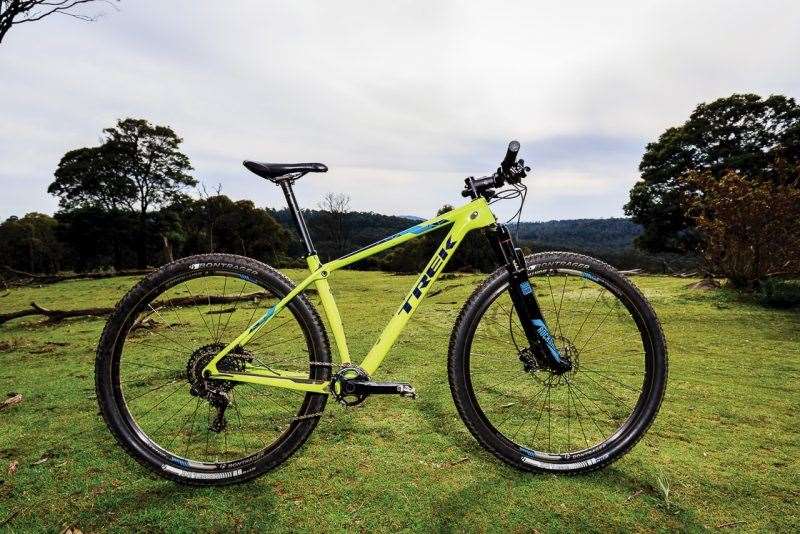
ESSENTIALS
Trek Procaliber 9.7 SL
RRP $4499
Weight 10.82kg (as tested)
Contact: trekbikes.com/au/en/
Available Sizes 15.5”, 17.5”, 18.5”, 19.5” & 21.5”
Frame Material: OCLV Mountain Carbon
Fork: RockShox Reba RL, Solo Air, Remote Lockout, 100mm
Photographer: Timothy Arch
Tester: Wil Barrett
Three things you liked about the bike:
1. Fast, intuitive handling
2. Rocket like acceleration
3. Well considered parts selection
Three things you would change about the bike:
1. A wider handlebar
2. Tubeless setup with 2.35” tyres
3. Fit a carbon post and direct mount chain ring
All photos by Timothy Arch

